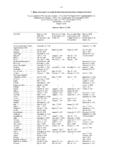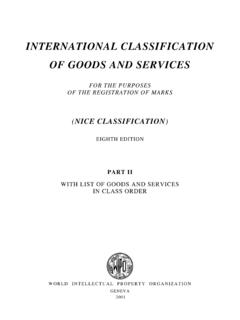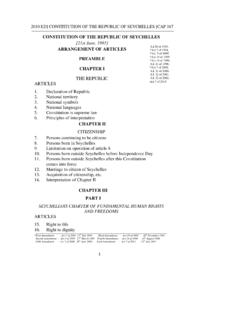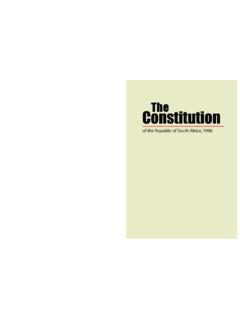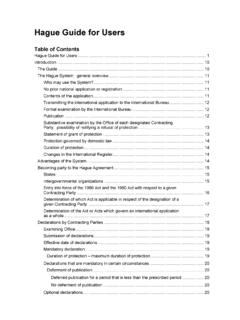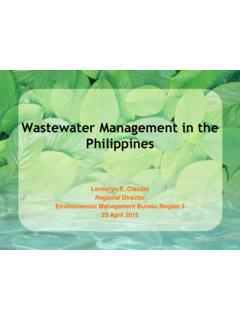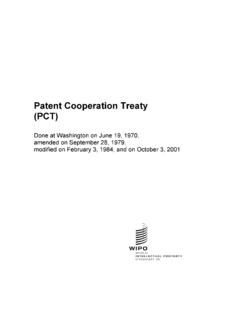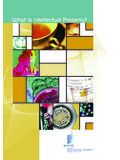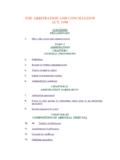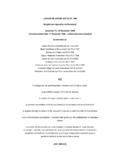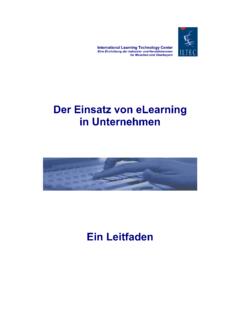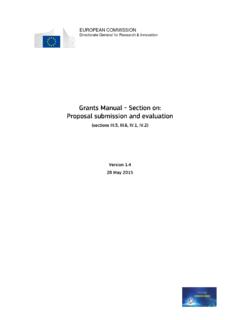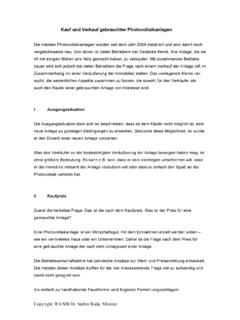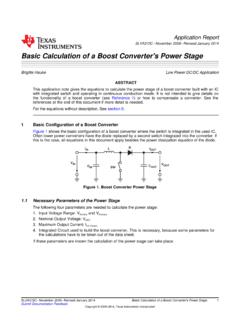Transcription of Guidelines for Preparing Patent Landscape Reports …
1 Guidelines for Preparing Patent Landscape Reports 2015. Guidelines for Preparing Patent Landscape Reports Guidelines prepared for the world intellectual property organization (WIPO). by Anthony Trippe, Patinformatics, LLC. With contributions from WIPO Secretariat 2015. 1. Chapter 1: Executive Summary Patent Landscape Reports (PLRs) support informed decision-making, and are designed to efficiently address the concerns associated with making high stakes decisions in various areas of technology, increasing the related degree of confidence. For many years decision-makers operated based on personal networks and intuition. With the institution of Patent analytics, and PLRs, it is possible for these critical decisions to be made with data-driven, evidence-based approaches that deliver informed choices, and mitigate the associated to the decision risks.
2 The insight gained from the preparation of a Patent Landscape report can be applied to almost any organization engaged in the evaluation of technology, and its impact on society. Government agencies, as well as private enterprise can gain valuable perspective on a developing, or well- established field by generating a PLR. As an example, PLRs can be used as instruments to inform public policy makers in strategic decisions to related to R&D investment, prioritization, technology transfer or local manufacturing. Patent information can and is increasingly being used as a tool to inform public policy: Policymakers who deal with innovation have increasingly focused on the Patent system. They look for clearer, more accessible and geographically more representative information to support key policy processes. They seek a stronger empirical basis for their assessments on the role and impact of the Patent system in relation to key areas.
3 While PLR are undoubtedly useful instruments for informed decision-making, producing one can be a time-intensive and expensive process. An organization willing to devote the resources necessary to generate a PLR often does so when they are Preparing to make a significant monetary or headcount investment in developing or moving into a technology area. It is critically important to make certain that a PLR is prepared properly in order to ensure that the insight it provides is accurate, and directed towards the key issues associated with technological implementation. This document provides details on the stages required for the preparation of a PLR. It is provided as a means for instructing new practitioners on the steps required in generating a PLR, but it is also useful for recipients of PLRs having such Reports produced for them in-house or by third-party service providers.
4 It is also hoped that providing a template for the preparations of PLRs will help continue the development of standards, and best practices that can be used, and built upon by the Patent analysis community. By understanding the processes involved in Preparing a PLR all of the varied stakeholders, providers, and users of the information they contain will have a better understanding of what can be expected from a PLR, and how many resources will need to be involved in its creation. The present Guidelines were developed in the framework of the Development Agenda project "Developing Tools for Access to Patent Information" (DA_19_30_31_02), in particular Phase II of the project which was approved by the Committee for Development and intellectual property at its tenth session in November 20121. It is also intended to be used as resource for Patent information users in general, and in particular for capacity building activities on Patent analytics at WIPO's Technology and Innovation Support Centers (TISC)2.
5 1 For the project document see 2 2. Chapter 2: Table of Contents for Patent Landscaping Reports Guidelines 1. Executive Summary 2. Table of Contents 3. Introduction 4. Basics of Patent Information Why analyze Patent information? Types of Patent documents and publication policies Applications PCT applications Granted patents Post-grant documents Kind codes Components of Patent documents Bibliographic data Applicant/Assignee Inventor Dates Priority data Classifications Citations Description (Disclosure). Claims Publicly accessible supplementary information associated with Patent applications File wrappers and prosecution history Maintenance information Assignment information Litigation Patent Families Sources of Patent information National Patent Offices Free Online Sources Commercial Sources Reports associated with Patent information 3.
6 Landscape Map Watch or Alerts Freedom-to-Operate / Clearance Patentability / Prior-Art Validity General Statistics 5. Objectives and Motivations for Generating Patent Landscape Reports Objectives behind Patent Landscape Reports To support governmental policy discussions Global Efforts Regional Efforts National Efforts Technology transfer and licensing Research and development decision making Business or corporate uses Competitor monitoring Technology monitoring Mergers and acquisitions Motivations for generating Patent Landscape Reports Who is the report intended for? How does it save the client time? How does it add value to the decision making process? How will the user evaluate the effectiveness of the report ? 6. Tasks Associated with Patent Analytics and Patent Landscaping Data cleanup and grouping List generation Co-occurrence matrices Clustering and classification Spatial concept mapping Layering or stacking information Geographic representation Network analysis Semantic analysis 4.
7 7. Frameworks Associated with Performing Patent Analytics and Patent Landscape Reports Content types for conducting analysis Data mining Text mining Data scale for conducting analysis Macro-level Meso-level Micro-level The Linear Law of Patent Analysis Precision and recall General skill set requirements for analysts General thoughts on the use of visualizations The story telling method 8. Preparing Patent Landscaping Reports Planning for the production of a report Selecting a topic Identifying collaborators and partners Defining the scope Country coverage Time period coverage Patent family reduction method Inclusion of non- Patent literature (NPL). Preparing a Terms of Reference (TOR). Sections to be included Deciding on how the work will be conducted Using external providers Request for proposals Selecting a candidate Establishing deliverables, timing, payments and evaluation criteria Conducting the work in-house Performing the search Determining the type of searching to be done Determining which databases to use Sharing the strategy 5.
8 Preparing the data to be analyzed Field cleanup and grouping Family or invention reduction Is manual review required for precision? Determining which year field will be used Generating technology categories Reconciling forward citations Statistical analyses to include Number of families or inventions Number of national stage entries Number of granted patents Technology categories Office of first and second filing Top applicants/assignees Top inventors Highest cited patents Additional statistical analyses to consider including Type of applicants/assignee Percentage of foreign born inventors Patent quality indicators Number of Patent by R&D spending Percentage of triadic families Additional analysis types to consider including Citation and co-inventor networks Spatial concept maps Problem/Solution semantic examination Top patents for immediate consideration Writing and publishing the report and accompanying data Writing the report Publishing the report
9 And accompanying data Published Reports Published data Published visualizations Evaluating the report 6. 9. Third-Party Analysis Tool, Patent Database and report Production Providers List of analysis tool providers List of database providers List of Landscape report service providers 10. Additional Topics Related to the Strategic Use of Patent Information but Not Covered in Guidelines Valuing Patent documents Prosecution history or file wrapper analysis Mapping patents to products Litigation analysis Predictive models 11. List of Web Resources on Patent Landscaping Reports Patent analysis and landscaping methods LinkedIn Groups on Patent landscaping and analysis Available collections of Landscape Reports 12. List of Literature Publications on Patent Analysis and Landscaping Papers Books 13. Annex Generic Terms of Reference for Patent Landscaping Reports 7.
10 Chapter 3: Introduction Patents provide a right to exclude others from operating in the area the invention is being claimed for. Thus, they have business and legal implications associated with them. Receiving a Patent can be a reasonably expensive endeavor costing from $10,000 on the low-end to five to ten times that for more complicated applications. Since there are substantial costs associated with them, when organizations pursue a Patent it is generally an indication of high interest and potentially significant investment by them in the subject. Patents are also critical sources of information that may not be found anywhere else. A paper from 1986 citing a report from 19773 claims that 80% of the information found in patents is not found elsewhere. It is extremely difficult to quantify a value in this way, but it is generally accepted that due to the nature of novelty, associated with patents, and the general practice of most organizations to not publish their findings in scientific literature, that Patent information is a source of unique content, complementary to non- Patent literature.
